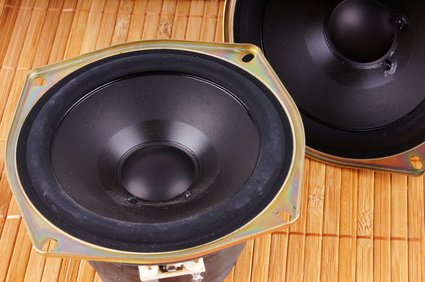Whether conventional Magnet or electromagnet - both Magnet types are now included in countless different household appliances, where they perform a variety of functions.
Now, however, it is the case that some doctors and naturopaths have been criticizing the overabundance of Magnets in our households and in our entire environment with skepticism. Although it has not yet been proven by conventional medicine that Magnets have a disturbing function on the human organism, nevertheless it can't hurt if you know in which household appliances and everyday objects magnets are installed. Here is an overview:
Loudspeaker
Basically, a loudspeaker works by converting the electrically supplied energy into kinetic energy so that sound waves can be emitted. To ensure this conversion, the loudspeaker has at least one magnet that sits in a membrane and is attracted or repelled by the electrical signals. As a result, the membrane begins to vibrate and sounds can be produced. So it is true: everywhere in our environment and in our households where loudspeakers are present, magnets are also installed. This applies to the usual loudspeakers in stereo systems, but also to televisions, radios, headphones, telephones, etc.

Refrigerators, freezers, etc.
In order for cooling devices such as refrigerators, freezers, etc. to perform their function, a special coolant must circulate inside them. This coolant is in a circuit that is controlled by various valves and thermostats. This is exactly where magnets are used as switch elements. In addition, each refrigerator has an electric motor as a drive, which also works with a built-in electromagnet. By the way, most of the defects in refrigerators and freezers are based on the fact that a small solenoid switch no longer opens and/or closes. So it's a part with a cost in the penny range that causes entire household appliances to be thrown away. Only very few craftsmen today still repair such small elements.
Kitchen appliances
Whether microwave, food processor, blender, coffee maker or stove - all these devices also work with electric motors or with the aid of electrical energy and therefore contain magnets. They serve - exactly in the refrigerator or the freezer - on the one hand as a basic element in the drive motor, on the other hand magnets are also used for switches or relays to be able to control the corresponding circuits.
Doorbell and door opener
Today, the doorbell also almost always works with an electric motor and is thus equipped with a magnet. Often an additional magnet is used in the installed loudspeaker, which produces the corresponding signal when the bell is pressed. The same applies to the door opener. This is a larger electromagnetic switch compared to the electric circuit. When the door opener is actuated, the switch interrupts the magnetic force, allowing the door to be opened. When the switch is not actuated, the door is kept closed.
Washing machines, tumble dryers etc.
In washing machines and tumble dryers, the central element is the electric motor. It ensures that the drum can rotate and thus the device works properly. In addition, tumble dryers and washing machines also contain a heating element, which is also electronically operated and usually contains one or more magnets for control. Smaller solenoids are also used in the electronic control devices and in the mechanism for closing and opening the door of washing machines and tumble dryers. These are therefore relays or magnetic switches that ensure the desired function.

Children's toys
Many people don't think it's possible, but even children's toys often have built-in magnets. This already starts with toys for the youngest children. Wind-up mobiles, sound games etc. almost always have a loudspeaker and therefore also built-in magnets. Later, all kinds of electronic games are used, i.e. those with a built-in electric motor, which also incorporates magnets. Not to forget: the well-known baby phone, i.e. a device to monitor our baby when we are not around. Here, too, both a microphone and a loudspeaker are built in, so we find at least two magnets there.
Heating systems
No matter whether gas heating, oil heating or electric heating - magnets are used for a variety of functions in almost all forms of heating systems. These are found in particularly large numbers in electric heaters. This may also be the reason why some experts prefer conventional oil or gas heating to electric heating. And even systems such as heat pumps for the use of geothermal energy require solenoids to be able to switch the corresponding control circuits.
Telephones
A telephone, whether stationary or mobile, contains a large number of magnets of different sizes. You need to know this: A telephone has both a loudspeaker and a microphone built in, and the device also contains several control circuits, which are often also equipped with magnets. If an answering machine is also installed, the number of built-in magnets increases even further. There is hardly any other device in which so many magnets are built in as in a handy telephone. By the way, this also applies to our smartphones, which we no longer want to do without in our everyday lives. If you are worried about being exposed to so much magnetic radiation when using your phone, you should make sure that you choose a model that has been labelled "low-radiation". These low-radiation phones are now available both as conventional cordless models for the home and in the form of mobile phones.

Conclusion: No household today can do without the use of a large number of magnets!
We don't usually see them, but they are everywhere in our everyday lives - magnets. Especially in household and electrical appliances we find them everywhere, e.g. in the washing machine, the TV set or the lamp on the ceiling. Should we be worried about this? For the most part, experts say no. After all, we are already in the midst of a gigantic Magnetic field, so why should the small magnets in our homes have any harmful effect on our health? In addition, more and more appliances are being converted to digital technology, so in the long term the use of magnets in household appliances will decline.

 https://Magnet.Tips
https://Magnet.Tips